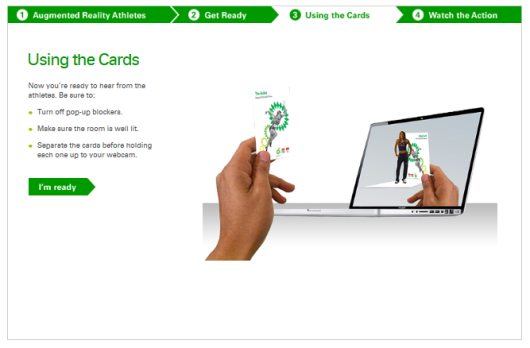BP Brings Fans Closer to Team USA Athletes with an Innovative Augmented Reality Initiative
/As an official sponsor of the U.S. Olympic Committee, BP recently released an innovative new augmented reality campaign that gives consumers a chance to face-to-face with some of the world's best athletes. BP teamed up with nine U.S. athletes to develop an interactive trading card series that will be included in the December 19th issue of BusinessWeek and featured on BP's website.
Consumers who download the trading cards can hold them up to their computer screen or a mobile phone camera and see them come to life as the athletes digitally appear in front of the user with exclusive training tips and information about themselves and their sports.
U.S. Olympic and Paraylmpic athletes featured in the exclusive trading card series include:
- Lolo Jones - Track & Field, 100m Hurdler
- Tatyana McFadden - Paralympic Cycling, Wheelchair
- Sanya Richards-Ross - Track & Field, 400m Sprinter
- Bryan Clay - Track & Field, Decathlon
- Rudy Garcia-Tolson - Paralympic Swimming, 100m and 200m Swimmer
- Jonathan Horton - Gymnastics
- Jerome Singleton - Paralympic Track & Field, 100m and 200m Sprinter
- Rebecca Soni - Swimming, 100m and 200m Breaststroke
- Matt Stutzman - Paralympic Archery
Check out BP's augmented reality trading card series here and learn more about their commitment to Team USA on their official Facebook page.





